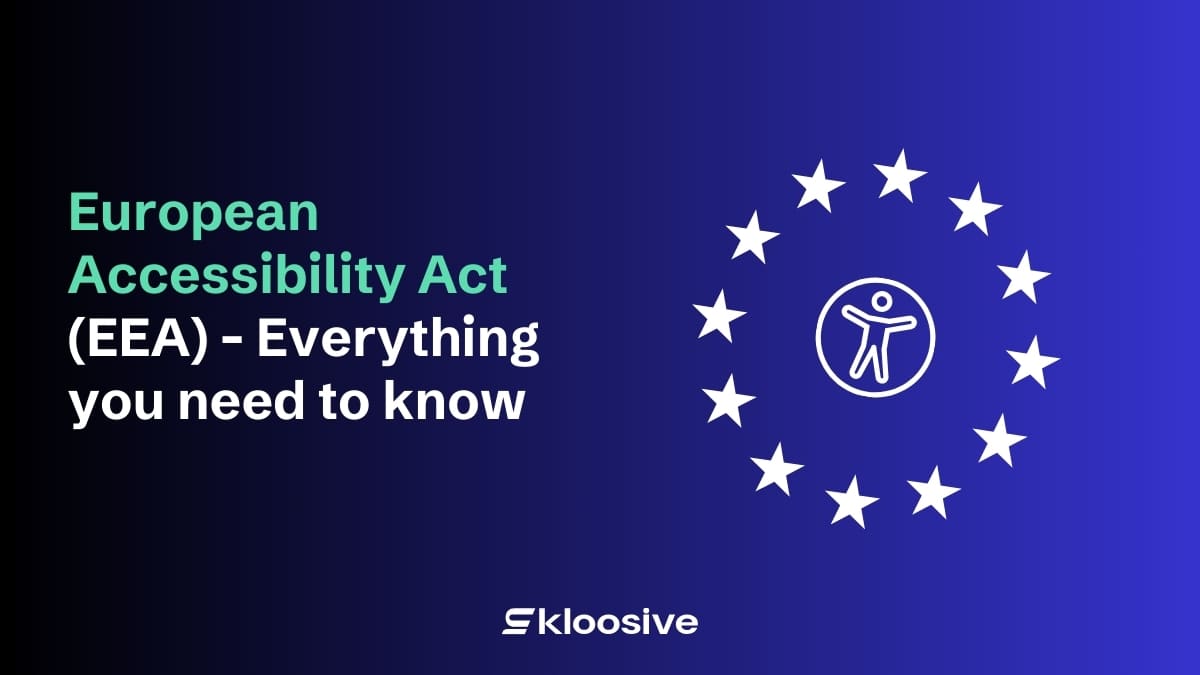In the present digital era, accessibility is now essential rather than just a bonus, as it enables people with disabilities to actively engage in society. The European Accessibility Act (EAA) is a symbol of inclusivity, leading the path towards a more accessible digital environment throughout the EU.
The EAA: An Aligned Strategy for Ensuring Accessibility
The EAA, enacted in 2019 and being implemented in 2021, seeks to harmonize accessibility standards among EU countries, promoting a unified market for inclusive goods and services. Member states were required to enact the requisite implementation laws before June 28, 2022, and guarantee the enforcement of the accessibility measures outlined in the EAA by June 28, 2025.
This coordinated method removes the requirement for companies to navigate through a confusing array of regulations, streamlining compliance procedures and cutting down on expenses. In addition to making regulations more efficient, the EAA represents a significant move towards greater societal inclusivity. By guaranteeing equal access to everyone, people with disabilities are included and able to participate fully in education, work, and society.
Products and Services Embraced by the EAA
The EAA goes beyond just rules, it includes many essential products and services that are part of our daily lives. This covers private gadgets such as smartphones, computers, and e-readers, along with shared amenities like ATMs, TV shows, and public transportation. Moreover, the EAA is responsible for overseeing information and communication services such as websites, apps, and digital platforms that offer information or services.
The conditions and responsibilities specified in the directive pertain to a company with over 10 employees and either a yearly revenue of more than EUR 2 million or a yearly balance sheet total surpassing EUR 2 million.
Smaller businesses that do not meet these criteria are not required to follow the specific accessibility requirements and obligations stated in the directive.
Main Criteria for Achieving Accessibility Excellence
The EAA specifies unique accessibility standards for every type of product and service, with a focus on crucial usability aspects. This consists of labeling that is clear and easy to understand, controls and input methods that are user-friendly, compatibility with assistive technologies, navigation that is consistent and expected, sufficient contrast and color perception, as well as mechanisms for preventing and recovering from errors.
Advantages of Adopting the EAA approach
Adhering to the EAA not just encourages inclusivity but also offers real advantages for businesses and organizations. Embracing accessibility principles can lead to improved customer satisfaction and loyalty, a stronger brand reputation, better market access and competitiveness, and decreased legal risks and potential penalties.
Kloosive: Your One-Stop Shop for Web Accessibility
At Kloosive, we think that web accessibility is a key component of a design approach that prioritizes the needs of users. Our offerings equip organizations with the necessary tools and knowledge to meet EAA compliance and more.
Our solutions offer automatic website accessibility testing and fixing, personalized audits and reports on accessibility, as well as professional help and assistance for meeting regulations.
Through collaboration with Kloosive, companies can guarantee that their websites and digital offerings are accessible to everyone, promoting an inclusive and fair digital experience for all.
A Route to a Digital Environment that is More Welcoming to Everyone
The European Accessibility Act is a major achievement on the path to a society that is more inclusive and accessible. Businesses and organizations that follow these principles not only adhere to legal requirements but also benefit from a broader and more involved customer base. With the assistance of Kloosive, businesses can successfully maneuver through the challenges of web accessibility and establish an inclusive digital environment for everyone.
